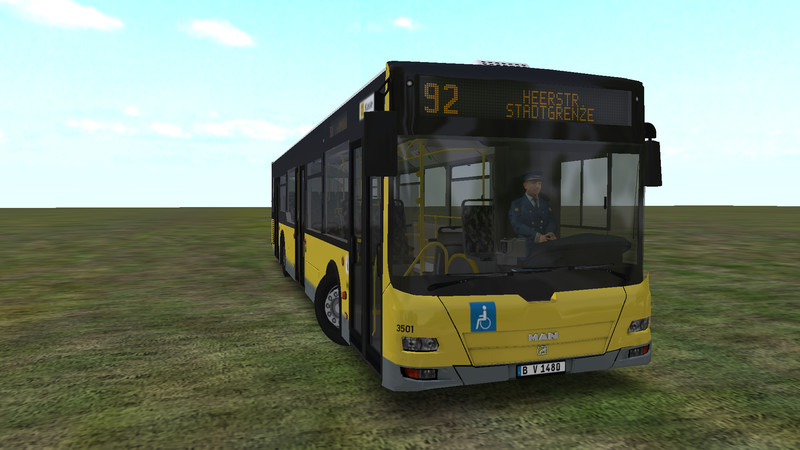


The MAN DN95 is also used in other cities for sightseeing tours. In addition, there were the sightseeing variants, in summer with a roll able roof, so that the guests had a good view of the sights in the upper deck.

But it is a trademark of the MAN DN 95, because it had a stationary engine. Even the rich sound in the lower deck should not have pleased every passenger. At 4.12m, the vehicle was only able to cross selected bridges in Berlin that had been checked and approved in advance. This vehicle series was replaced by its well-known successor - the MAN Lion's City DD, which is used in the AddOn Berlin X10.Īs often and as often as the vehicle was used, there was also a big deficit - its height. Thus it bore the proud title: The world's first low-floor double-decker, which made its debut at Berliner Verkehrsbetriebe (Berlin Public Transport) BVG.īVG received a total of 86 vehicles and used them until 2010. For the first time, the double-decker was designed in a low-floor design. In its design, passengers with restricted mobility were also taken into account. There were several innovations, such as the low-floor design, the interior swing door behind the rear axle or the LCD display, which some models had.Įspecially for a faster passenger change the bus got a 3rd door behind the 2nd axle. The prototype was developed by MAN (chassis) and ABB Henschel (superstructure) until 1994 and series production began in 1995. Now this bolide will be usable in OMSI 2 for the first time thanks to the Add-on MAN DN95. It offered 71 passengers seats, another 21 could be transported standing. This double-decker bus, originally called MAN ND202, belongs to Berlin like the Brandenburg Gate, the Reichstag or the TV tower.

This results in a reduction in well-to-wheel greenhouse gas emissions and fuel consumption of 18% in the LowCVP test cycle.Hardly any other bus has shaped the cityscape as much as the MAN DN95. SmartPack combines engine stop/start and electrically-driven cooling fans with the smart management of alternator and air compressor to only charge during vehicle deceleration when they place no additional load on the engine. It is accredited as a Low Emission Bus by the Low Carbon Vehicle Partnership (LowCVP) when fitted with the award-winning SmartPack efficient diesel technology, developed in-house by Alexander Dennis. T his visionary, collective approach has resulted in a class-leading bus designed by the industry, for the industry, introducing a wealth of benefits for operators, drivers and passengers. The Enviro400 has been meticulously thought-out and built as part of a unique partnership involving our world-leading design and engineering teams, customers from all walks of the industry and suppliers with unique, specialist skills. Overview Designed by the industry, for the industry


 0 kommentar(er)
0 kommentar(er)
